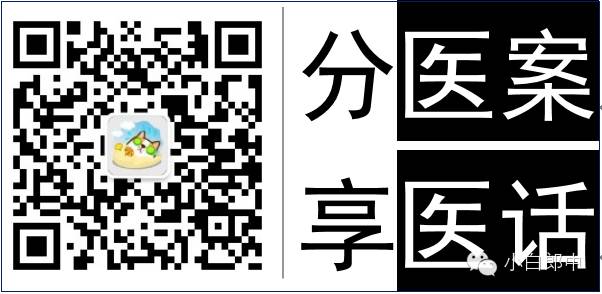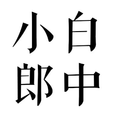
Dr. Xiao Bai: A reference article for clinical practice in Traditional Chinese Medicine (TCM)

Introduction: Today, let us learn from Mr. Tao Yufeng about the 21 uses of Huang Lian (Coptis Chinensis). 1 Huang Lian is a key herb for treating eye diseases, dysentery, and vomiting. However, for eye diseases, it must be combined with herbs that dispel wind and invigorate blood; for dysentery, it should also promote qi and guide out turbidity; for vomiting, it must also calm and transform phlegm to achieve quick results. Relying solely on its bitter cold nature cannot guarantee success. 2 For various sores, Huang Lian and Dang Gui (Angelica Sinensis) should be the main herbs, with Gan Cao (Licorice) and Huang Qin (Scutellaria Baicalensis) as assistants. For acute red and swollen eyes that are unbearably painful, Huang Lian and Dang Gui should be soaked in wine and decocted. 3 Huang Lian enters the heart and the membranes, effectively clearing heat. It can also enter the liver, and like other guiding herbs, it can enter all meridians, but it is particularly effective in the heart. 4 Huang Lian can resolve the agitation caused by overdosing on medications and the toxicity of Ba Dou (Croton Tigris) and Qing Fen (Arsenic). 5 Most bitter cold herbs drain, but Huang Lian and Huang Bai (Phellodendron) are cold and dry, capable of lowering fire and eliminating dampness, thus stopping dysentery. Therefore, it is the main herb for treating dysentery. Furthermore, any herb that can eliminate dampness must generate heat, and any herb that can remove heat cannot eliminate dampness. Only Huang Lian can use its bitterness to dry dampness and its coldness to eliminate heat, achieving both effects simultaneously, which is unparalleled. 6 Heart fire assists the liver, so Huang Lian should be the main herb. Moreover, all meridian-clearing fire herbs benefit from the addition of Chuan Lian (Coptis), which enhances their potency. Huang Lian combined with Bai Shao (White Peony) clears spleen fire; with Shi Gao (Gypsum), it clears stomach fire; with Long Dan Cao (Gentiana), it clears liver and gallbladder fire; with Zhi Mu (Anemarrhena), it clears kidney fire; with Huang Qin, it clears lung fire; with Mu Tong (Akebia), it clears small intestine fire; with Huang Bai, it clears bladder fire; with Huai Mi (Sophora), it clears large intestine fire; and with Shan Zhi Zi (Gardenia), it clears San Jiao fire. 7 Ancient formulas for treating dysentery include Xiang Lian Wan, which uses Huang Lian and Mu Xiang (Aucklandia), and Jiang Lian San, which uses Gan Jiang (Dried Ginger) and Huang Lian. The Bian Tong Wan uses Huang Lian and Zhi Yu (Cornus), while Jiang Huang Wan uses Huang Lian and Sheng Jiang (Fresh Ginger). For treating diabetes, Huang Lian should be steamed with wine; for heat stroke, it should be boiled with wine; for blood in the stool, it should be combined with Huang Lian and garlic; for liver fire, it should be combined with Huang Lian and Zhi Yu; for mouth sores, it should be combined with Huang Lian and Xi Xin (Asarum); all these combinations reflect the balance of cold and heat, yin and yang, with cold used for heat and heat used for cold, ensuring mutual assistance between the monarch and minister herbs, achieving the best formulation without the risk of bias. 8 The preparation of Huang Lian can involve pairing it with Da Huang (Rhubarb) and Shao Yao (Peony) for drainage, or with Ban Xia (Pinellia) and Gua Lou Shi (Trichosanthes) for dispersing, or with Gan Jiang and Fu Zi (Aconite) for warming, or with E Jiao (Donkey-hide Gelatin) and Ji Zi Huang (Egg Yolk) for moistening, or with Ren Shen (Ginseng) and Gan Cao for tonifying, depending on the condition, thus achieving the benefits of bitterness and dryness without the drawbacks. 9 Huang Lian combined with Zhi Ke (Aurantii Fructus) treats blood hemorrhoids; with Tian Hua Fen (Trichosanthes Root) alleviates thirst; with Wu Wei Zi (Schisandra) and Gan Cao, it can be decocted into a concentrated juice for gargling, effectively treating oral ulcers; with Mai Men Dong (Ophiopogon) and Wu Wei Zi, it treats sudden thirst and frequent urination; with Ren Shen and Lian Zi (Lotus Seed), it treats stagnation in the elderly and postpartum women. 10 Huang Lian and Gan Jiang used together, one being pungent and the other bitter, one dispersing and the other descending, can open and drain regardless of cold or heat pathogens, making these two herbs the main ingredients for treating fullness.For food stagnation and fullness in the chest, Huang Lian and Zhi Shi (Aurantii Fructus) should be used; Huang Lian combined with Ban Xia clears heat and descends rebellious qi. 11 Huang Lian used raw as the main herb, with a small amount of Rou Gui (Cinnamon), decocted until boiling, and taken with honey on an empty stomach, can quickly harmonize the heart and kidney.Some say Huang Lian and Rou Gui are opposites in temperature and should not be used together, but there are successful cases of their combination. Huang Lian enters the heart, while Rou Gui enters the kidney. Throughout the day and night, the heart and kidney must communicate for water and fire to be harmonized; if water and fire are separated, the heart and kidney cannot communicate. If the heart does not communicate with the kidney, one cannot sleep at night; if the kidney does not communicate with the heart, one cannot sleep during the day.When Huang Lian and Rou Gui are used together, the heart and kidney communicate instantly, so why would there be any disturbance in dreams? 12 Huang Lian has excellent calming, sedative, and tranquilizing effects, beneficial for insomnia, irritability, lack of concentration, and obsessive thoughts. In the differential diagnosis and prescription, adding 10 grams of Huang Lian can significantly enhance efficacy, eliminate lack of concentration, and improve memory, just as recorded in the “Shen Nong’s Materia Medica”: “Long-term use prevents forgetfulness.” 13 Huang Lian has a good therapeutic effect on rapid heart rhythm disorders caused by excessive heart fire.When paired with E Jiao, it treats insufficient heart blood; with Sheng Di (Rehmannia), it treats insufficient heart yin; with Mai Dong, it treats insufficient heart fluids; with Shi Hu (Dendrobium), it treats irregular heart rhythm; and with Suan Zao Ren (Sour Jujube Seed), it treats palpitations (rapid heart rhythm) and insomnia caused by disharmony between the heart and liver. 14 Huang Lian in small amounts acts as a bitter stomach tonic,internally it can stimulate the secretion of saliva and gastric juices, enhance gastric motility, promote gastrointestinal absorption, and increase appetite. However, excessive use can lead to bitter cold harming the stomach, resulting in indigestion. 15 Huang Lian is a key herb for treating diarrhea due to its bitter cold nature, clearing damp-heat.Although chronic diarrhea often presents with signs of yang deficiency and cold dampness, many patients report that taking Huang Lian or adding it to formulas can provide temporary relief.This is because this herb has the dual functions of strengthening the intestines and stomach, antibacterial and anti-inflammatory, and drying dampness, making it frequently used for chronic diarrhea.For chronic diarrhea of the deficiency-cold type, while using Da Zao (Jujube), Fu Zi, Gui Zhi (Cinnamon), and Cardamom, a small amount of Huang Lian can be added without concern for its cold nature, but for its bitterness, using 3-6 grams in the formula, combining pungent, bitter, cold, and hot, can both drain dampness and strengthen the spleen, warm the kidney,especially suitable for constipation with difficulty in passing stools, a greasy yellow tongue coating, or positive bacterial tests. 16 Chronic diarrhea is often associated with spleen and kidney deficiency-cold, and the habitual use of pungent and hot substances can lead to concerns about dryness harming yin; however, adding Huang Lian can harmonize cold and heat, ensuring yin and yang follow each other, achieving the opposite effects. 17 Miao Zhongchun treated dysentery with a large dose of Huang Lian, as in the key formula for dysentery,the “Zhi Xia Jin Wan” is made solely from Huang Lian, taken in doses of 4 qian (15 grams) each time.Huang Lian has a bitter cold nature, and such a heavy dose can inevitably harm the stomach and deplete fluids.However, Miao emphasized pairing and processing to prevent this drawback:1. Based on the different symptoms of dysentery, appropriate herbs should be decocted and taken. For weak stomachs, use Ren Shen, Lian Zi, and Ju Hong; for abdominal pain, use Bai Shao and Gan Cao.2. Great emphasis on processing. For the “Zhi Xia Jin Wan”, first soak in ginger juice, then fry nine times with soil, then finely grind, and form into pills with ginger juice water, using this processing method to reduce the side effects of Huang Lian’s bitter cold on the stomach. 18 Huang Lian is good at entering the heart to clear heat; when the heat in the heart is cleared, the heat in the upper jiao is also cleared, thus this herb is effective in treating meningitis, cerebral congestion, and dizziness. 19 Huang Lian combined with Huang Qin and Gan Cao has a good effect in treating Hu Huo disease (similar to Behçet’s disease). 20 Using 15 grams of Huang Lian and 20 grams of Ma Huang (Ephedra) (first decoct to remove the foam, then add Huang Lian and decoct together) treats iritis and ciliary body inflammation with significant results. 21 For retinal arteriosclerosis, taking Huang Lian internally can prevent blood vessel rupture; if rupture occurs, combining Huang Lian with Jue Ming Zi (Cassia Seed) in decoction can also dissipate blood stasis.Note:Please follow medical advice for specific treatments and medications!This article is excerpted from “Clinical Materia Medica”, authored by Tao Yufeng, published by the People’s Health Publishing House, March 2005.You may also like, click to read the original text:Gan Zuowang: “Huang Lian” from the perspective of a surgeonTao Yufeng: How to use Che Qian Zi (Plantago Seed) most effectively?///////////[Read previous exciting articles]#Introduction to TCM Collection #Twelve Meridians Explained #Donghai Medical Collection #Old TCM Practitioners’ Experiences #Wonderful TCM Formulas #Secret Formulas #National Master of Medicine#Famous Cases of Cold Damage #Selected Famous Cases from the Golden Cabinet#Four Gentlemen Decoction #Etiology Assignment #Herbal Properties Assignment #Herbal Properties Song of 400 Herbs #Medical Three-Character Classic #Daily Insights from Mentorship in Medicine#Daily Insights from Mentorship in Theory, Law, Formulas, and Herbs#TCM Serialization CollectionMaster He Ren: What is the essence of using Wen Jing Decoction?Zhou Zhongying: Insights and Techniques from 60 Years of TCM Diagnosis (All Essentials)Ding Guangdi: Qiang Huo Sheng Shi Decoction for Treating “Five-Phase Diarrhea”Unexpectedly, “Qing Gu San” really is the remedy for fever after a fracture!Dan Zha San for Treating Hyperlipidemia (Including Four High Lipid Recipes)Shanghai Shen’s Gynecology 600-Year Family Secret RecipeMagical! A wonderful experience using ancient formulas to treat tooth decay! The ancient formula “San Liang Ban” quickly treats lumbar muscle strain![Collect] Eight formulas from Nanshi for treating insomnia, hypertension, and gastrointestinal diseases!


